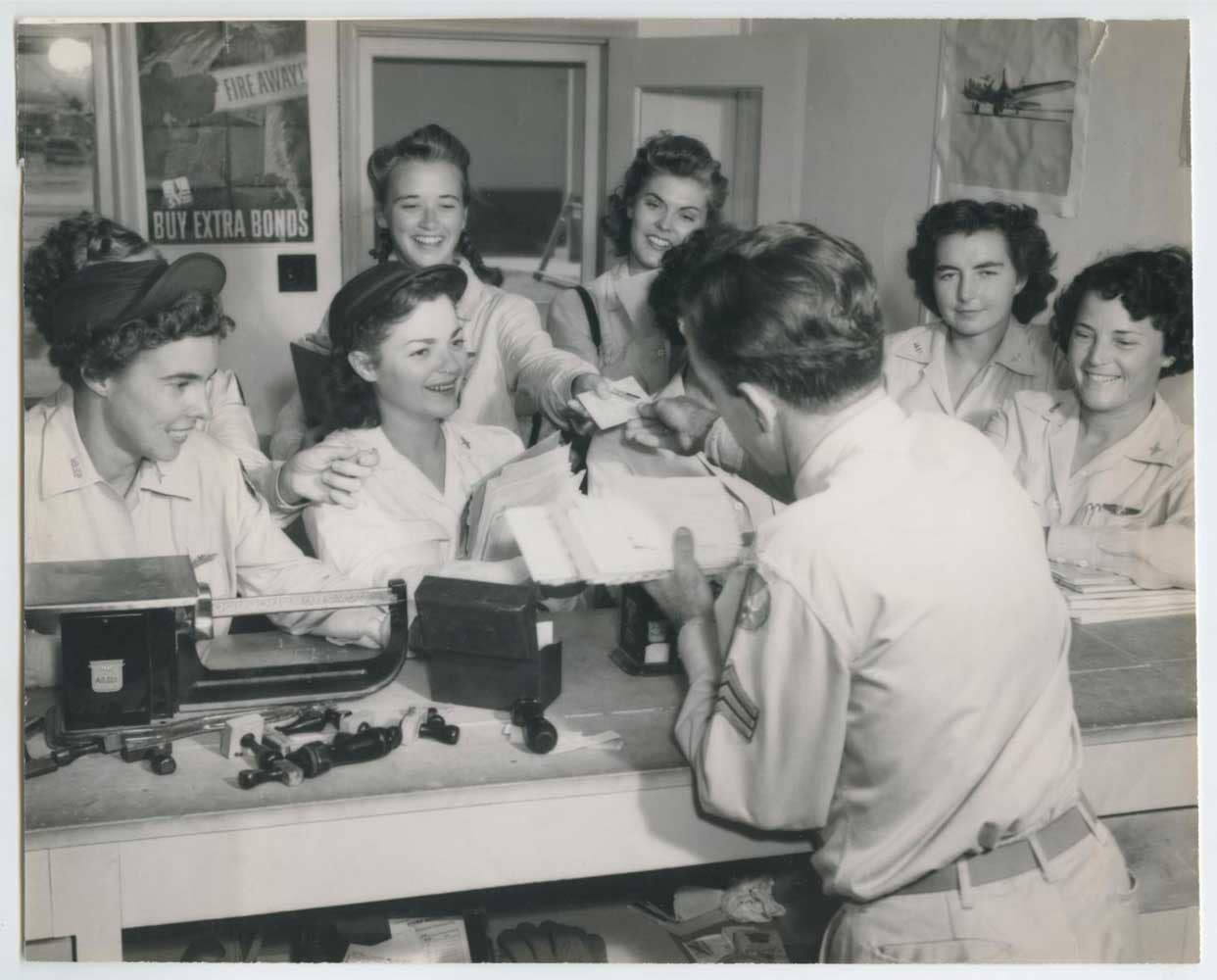
Photo: National Park Service
To simply say that American women played a critical role as ‘weapons’ in the war effort during World War II, would be a drastic understatement. To put that in context, more than six million women took jobs in factories on the U.S. home front, and about 350,000 women answered the call to serve in uniform…in addition to the 1,100 (then) civilians who began serving in the WAFS and WFTD very shortly after Eleanor Roosevelt’s commentary.
In Eleanor Roosevelt’s My Day column in September 1942, she wrote
“I believe in this case, if the war goes on long enough, and women are patient, opportunity will come knocking at their doors. However, there is just a chance that this is not a time when women should be patient. We are in a war and we need to fight it with all our ability and every weapon possible. Women pilots, in this particular case, are a weapon waiting to be used.”

Photo: Cradle of Aviation
But their stories did not take place on a battlefield, nor was a shot fired, save for the squeeze of a hefty rivet gun (by a torrent of women, known as ‘Rosies’) to pull a metal pin through two pieces of metal inside aircraft production factories, shipyards and ordnance shops, or by pressing the shutter button on a reflex camera as a war correspondent.

Photo: Cradle of Aviation
After the attack on Pearl Harbor, the United States was thrust into a war on two fronts in Europe and the Pacific Theaters. The immense conscription of men into the armed services for both in-country and overseas duty resulted into a critical shortage of available workers. As the demand grew for labor, women and minorities were sought to fill the void, and they jumped at the opportunity to prove that they were a vital force in contributing to the war effort, and in society as well.
During the Second World War, the United States saw tremendous growth in the size of its military aircraft arsenal. In 1939, with less than 6,000 airplanes produced, the aircraft industry doubled production in the year 1940, and again in 1941 and 1942. During this time of staggering growth, the aircraft industry in the U.S. became the largest single industry in the world, rising from 41st place to 1st place, producing over 300,000 military aircraft for the U.S. military and the Allies between January 1940 and by war’s end in August 1945.
The Defense Logistics Agency reported in April 2020 that between 1940 and 1945, the percentage of females in the U.S. workforce grew from 27% to nearly 37%. And by 1943, more than 310,000 women worked in the aircraft industry, representing up to 65% of the industry’s workforce.
Women’s auxiliary divisions were formed for every branch of the military, including the USAAF Women Airforce Service Pilots; the WAC (Women’s Army Corps); Navy WAVES (Women Accepted for Volunteer Emergency Service); Marine Corps Women’s Reserve; Coast Guard SPARS (Semper Paratus, Always Ready).
Some 75,000 American women served as members of the Army and Navy Nurse Corps, and the Cadet Nurse Corps caring for patients in Europe and the Pacific, as well as on the home front. A largely untold story is that of the over 75 military nurses who were taken prisoners when the Japanese army occupied the Philippines. While at the Santo Tomas Interment Camp in Manila, they treated patients in captivity for three years.

Photo: Cradle of Aviation


Women volunteered in the United and abroad with the American Red Cross, the USO and hundreds of other organizations in support of the war effort.
By the end of the war some 127 American women had secured official military accreditation as war correspondents, while other female journalists remained on the home front documenting the dramatic changes taking place in the country under wartime circumstances.
Whether as a civilian on the home front, in uniform, or across the Atlantic, or Pacific, the ‘arsenal’ of American women proved to be a, or perhaps THE, decisive weapon that led the Allies to victory over the Axis during the Second World War…and the impact of their efforts and service still resonates today.
An excellent read about women who served in the WASP, WACS, WAVES, Marine Corp, Army & Navy Nurse Corps, and American Red Cross is ‘Texas Women In World War II’ by author and historian Cindy Weigand, 2003, ISBN 1-55622-948-8




Written by: Julia Lauria-Blum
Photos courtesy of: Cradle of Aviation Museum/nyheritage.org, US Signal Corps, Library of Congress, and the National Park Service
About Julia Lauria-Blum:
Julia Lauria-Blum earned a degree in the Visual Arts at SUNY New Paltz. An early interest in women aviation pioneers led her to research the Women Airforce Service Pilots of WWII. In 2001 she curated the permanent WASP exhibit at the American Airpower Museum (AAM) in Farmingdale, NY, and later curated ‘Women Who Brought the War Home, Women War Correspondents, WWII’ at the AAM. She is the former curatorial assistant & collections registrar at the Cradle of Aviation Museum on Long Island and is currently editor-in-chief for Metropolitan Airport News.
Julia is the proud mother of two daughters and a rescued Boxer. Her many interests include swimming, painting, traveling, aviation history, cooking, and storytelling.


